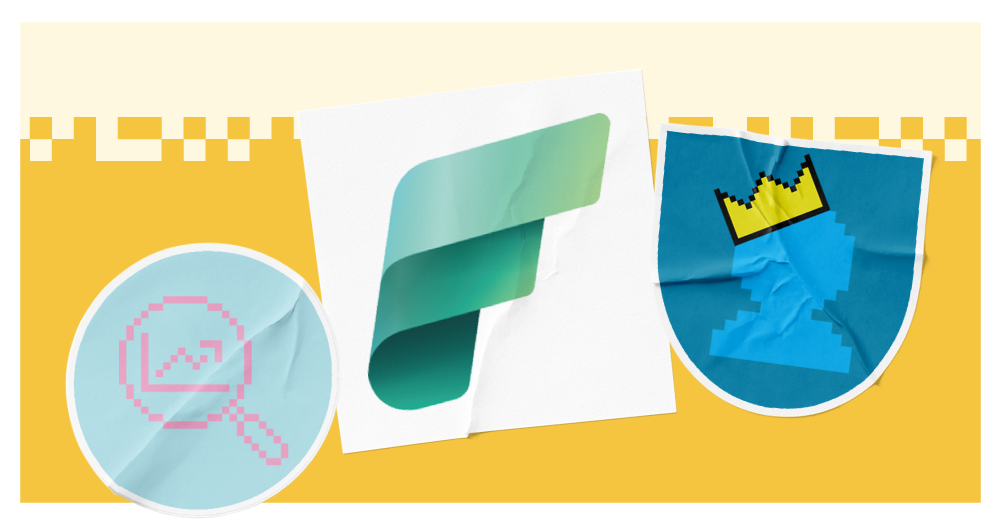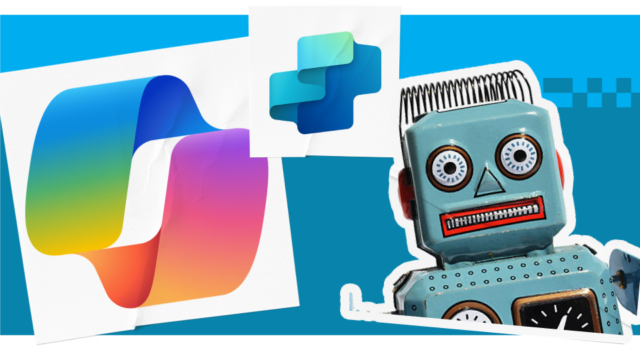Businesses have more access to data than ever before. This is both good and bad news.
On one hand, data makes it easier to make the right choices to provide more value to your customers, embrace market trends and optimise processes. Used correctly, you can drive productivity, lower costs, increase revenue and fuel better long-term performance.
On the other hand, the sheer volume of data can be overwhelming. When data is sat across numerous platforms, it can lead to siloes that drive disparate visions across the business and undermines decision-making. Data is also a risky asset to have, with data loss potentially resulting in non-compliance, fines and disgruntled customers.
In order to reap the rewards of data while navigating the challenges, you need robust processes and platforms. Microsoft Fabric is an end-to-end analytics platform designed to simplify the complexities of modern data.
In this guide, we explore what Microsoft Fabric is in more detail – including why it’s so crucial to businesses in the data-driven landscape.
What is Microsoft Fabric?
At its core, Microsoft Fabric is a unified, end-to-end, Software-as-a-Service analytics platform. It has been built specifically to address data complexities, providing organisations within a single, integrated environment to cover all data needs.
By centralising data, Fabric ends siloes and difficulties getting insights, instead giving everyone access in one location. By doing this, you can fuel decisive action that boosts growth. There’s a reason it’s used by 70% of the Fortune 500.
What’s included in Fabric?
Fabric is comprised of numerous tools, all tackling core parts of business data needs.
Firstly, everything is underpinned by OneLake, a SaaS-managed data lake for your entire organisation. This is the central hub where all your data, regardless of its source or the Fabric workload accessing it, lives. With data in one location, it becomes easier to govern, increasing compliance and protection.
For data integration, Fabric offers Data Factory, which ingests data from diverse sources (including on-premises, cloud-based, structured and unstructured environments). It simplifies the ETL/ELT process with over 200 connectors and intuitive Power Query transformations, allowing users to bring all their data into OneLake efficiently.
Mirroring capabilities further streamline integration by continuously replicating data from existing Azure SQL Database, Azure Cosmos DB and even third-party systems like Snowflake directly into OneLake, minimising data movement and complexity.
Next, Synapse Data Engineering provides a robust Apache Spark platform for data processing. This allows users to perform large-scale data transformation, cleansing and analysis using familiar languages like Python, Scala and SQL. Its integration with Data Factory enables the orchestration and scheduling of complex data pipelines.
For traditional data warehousing needs, Synapse Data Warehousing offers a high-performance, fully SQL-enabled environment. It ensures fast query performance and scalability for analytical workloads. It also supports full transactional DDL and DML operations, making it suitable for structured data analysis and reporting.
When it comes to data science and machine learning, Synapse Data Science provides an end-to-end workflow. It integrates with Azure Machine Learning, offering experiment tracking and model registry. Data scientists can leverage familiar tools like notebooks with Python and Spark to build, train and deploy ML models directly on the data within OneLake. The platform also facilitates collaboration with business analysts by enabling the integration of predictive insights into Power BI reports.
Finally, for real-time data needs, Synapse Real-Time Analytics is a fully managed platform optimised for streaming and time-series data. It can ingest and process data from various real-time sources with low latency. Utilising a performant query language (KQL), it allows for analysis of structured, semi-structured and unstructured data streams.
Why do businesses need Fabric today?
So, why is a tool like Fabric so critical to your business today?
As we’ve already mentioned, there has been an explosion of data in recent years, with organisations able to collect data across more touchpoints than ever before. This includes insights on customer behaviours and preferences, operational efficiencies, sales figures, social media interactions, market research and more.
All this data can be used to reiterate and improve your products, services and processes continuously. By utilising the data, you can lower costs, meet customer expectations more closely and, most crucially, push ahead competitively.
However, that can only happen if you’re able to access the right data in the right way. Often, data is fragmented between different teams and systems, meaning people only get part of the picture. This can reduce accuracy and limit decisions.
Plus, as your data volume increases, legacy systems may struggle to keep up, slowing down insights.
Fabric tackles this by bringing everything together in one place, so there are no barriers to access. This drives collaboration, ensuring everyone is working holistically to benefit the business, based on contextualised, accurate information.
The integrated nature of Fabric streamlines the process moving and transforming data between disparate systems, allowing businesses to analyse information more quickly and respond proactively to evolving customer needs. This will drive your time-to-insights, allowing you to make agile moves to futureproof the business.
Plus, it can reduce your costs. By consolidating multiple tools into a single platform, Fabric reduces the complexities associated with managing a fragmented data landscape and the cost of disparate data tools and storage. OneLake eliminates data duplication and simplifies data access across workloads, while the flexible scaling options (pay-as-you-go and reserved capacity) allow for cost optimisation based on your organisation’s usage patterns.
Addressing data and AI_
Data is a huge part of any organisation’s AI readiness. The best AI outcomes are built on properly prepared data, allowing you to get contextualised outputs without inviting risk.
Fabric simplifies the repetitive task of data preparation. Data scientists can seamlessly access and work with the vast amounts of data from OneLake, leveraging the data engineering capabilities of Data Factory and Synapse Data Engineering to cleanse, transform and feature-engineer data. This eliminates the traditional bottlenecks of moving data between storage and processing systems, significantly accelerating the time it takes to get data ready for model training.
Fabric also facilitates the seamless deployment and operationalisation of trained AI/ML models. Once a model is ready for production, it can be easily deployed within the Fabric ecosystem, making it accessible to other workloads like Power BI for embedding predictive insights into reports and dashboards. This tight integration allows business users to directly benefit from AI-driven insights, real-time personalisation, fraud detection and other immediate action-oriented applications.
Finally, Fabric integrates with Azure AI services, including the powerful Azure OpenAI Service. This opens possibilities for leveraging large language models (LLMs) for tasks like natural language processing, text generation and sentiment analysis directly within the Fabric environment. The built-in Copilot in Fabric further allows users to interact with their data using natural language to generate reports, visualisations and even code, lowering the barrier to entry for AI-driven insights for a wider range of business users.
Addressing data governance_
Data governance is critical, especially now businesses hold more of it. If you breach customer data, you can experience financial loss and reputational damage for non-compliance with GDPR and other regulations.
Fortunately, Fabric simplifies governance by providing a central platform for data storage (OneLake) and analytics workloads, reducing the complexities associated with governing data across multiple systems.
It also benefits from deep integration with Microsoft Purview, a data governance service, allowing organisations to discover, classify and govern Fabric data assets alongside their broader data estate. This integration enables features like automated metadata scanning of Fabric items, the application of sensitivity labels from Purview Information Protection to classify and protect sensitive data and automated auditing.
Alongside Purview integration, Fabric also includes features like a centralised admin portal, granular permissions and endorsement to mark high-quality data. This makes it easier to manage your data and control who accesses what.
Implementing Microsoft Fabric_
Ready to get started with Fabric? Here’s our step-by-step guide to preparing your business and ensuring smooth implementation.
Step 1: Define your business needs and use cases
The foundation of a successful Fabric implementation lies in understanding your organisation’s specific challenges and opportunities. Begin by identifying key business challenges that data can address. For instance, are you struggling with high customer churn, inefficient supply chains or a lack of real-time visibility into operations?
You can then turn these challenges into specific use cases where Fabric can provide tangible value. This could involve developing a customer churn prediction model using Synapse Data Science, optimising your supply chain with real-time analytics or building real-time operational dashboards with Power BI. There are lots of possibilities to explore.
It’s also good to define your KPIs for Fabric at this point, so you can better monitor progress and ensure you’re getting value after implementation.
Step 2: Assess your current data landscape
Before diving into Fabric, it’s crucial to take stock of your existing environment. This includes your current data sources, including databases, applications, cloud services and unstructured data repositories.
Map out your existing data infrastructure and data flows to identify potential bottlenecks and areas for improvement. Critically, identify potential data migration and integration challenges you might encounter when moving data to OneLake or connecting existing systems to Fabric.
If you have any concerns or questions at this stage, it may also be worth arranging for support from an external Microsoft Fabric expert.
Step 3: Start with a pilot project
To mitigate risk and gain valuable experience, it’s highly recommended to begin with a focused pilot project. Choose a specific use case that offers a clear path to demonstrating value.
Select a small, cross-functional team comprising individuals from relevant business and technical roles to work on the pilot. You can also take advantage of Microsoft’s free trial or preview environment to experiment with Fabric’s features and functionalities without immediate financial commitment. This allows your team to get hands-on experience and validate the platform’s suitability for your chosen use case.
Step 4: Explore Fabric’s core components
Once your pilot project is underway, begin experimenting with the specific Fabric workloads relevant to your chosen use case. For example, if your pilot focuses on data ingestion and warehousing, your team will primarily work with Data Factory for connecting to sources and ingesting data and Synapse Data Warehousing for modelling and analysing the data.
Simultaneously, you’ll want to familiarise yourself with OneLake and its data management capabilities. Encourage your team to also explore the different Fabric experiences to gain a holistic understanding of the platform.
Step 5: Iterate and scale
Based on the learnings and outcomes of your pilot project, refine your approach and processes for implementing Fabric. Identify what worked well, what could be improved and any lessons learned.
Then, gradually expand your Fabric adoption to address other use cases and data sources identified in your initial planning. As your usage grows, continuously monitor performance and optimise your environment to ensure efficiency and cost-effectiveness. This iterative approach allows for continuous improvement and a more successful long-term adoption of the platform.
Microsoft Fabric and your business’s AI readiness_
The unified data Fabric brings is crucial in the AI era. By centralising your data, you can easily and securely connect it to AI and get more accurate outputs, tailored to your business context. In the bid to become AI-driven, this can enable you to get more value and see efficiency skyrocket.
In the video below, Tristan, Chief Technology Officer at Infinity Group, explores the relationship between data and AI through Microsoft Fabric.




